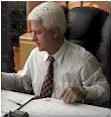There will never be a perfect media measurement. Nielsen after a long hiatus returned then disengaged radio ratings in the blink of an eye between 2006 and 2010. Early 80’s challengers like Birch, Mediatstat, and Track 7 had their time on that same stage only to give way to Accuratings in the 90’s. Overarching the field, Arbitron held and strengthened its hold on radio’s ratings oligopoly and with the exception of small market-based Eastlan, remain so today
Innumerable bright and well intentioned people have populated Arbitron past and present and have largely made an attempt to respond to their subscribing clients and critics. With Nielsen’s announcement of discontinuance, aside from Eastlan, Arbitron stands virtually alone; forging ahead with its PPM technology.
PPM was field-tested in large markets like Houston and Philadelphia where eager ownerships and programmers awaited field trial outcomes. There was much hope, much encouragement. The meter they said would move radio measurement in larger markets from “unaided memory voting” to empirical encoded actual listening. Weekly cume for stations like KODA in Houston and B-101 Philadelphia nearly doubled in those field tests. Yet TSL saw mixed reports; modest increases in some formats, decreases with others. In short where the PPM system was installed hope rose on the promise of more accuracy based on metered listening.
2012 brings an increasing glow of discontent. While this brief is not intended as a conclusive survey of PPM practitioners and subscribers, it instead explores systemic challenges and conditions within the PPM world. Audience Development Group has engaged a growing number of markets measured by PPM and thus seeks to get an arm’s length view from highly respected principles in research and marketing. Our conversations have been both enlightening and disarming.
PPM Issues and Challenges
Field penetration: Where under the diary system market #16 typically saw quarterly ratings reports based on 3,000 diaries adding to approximately 12,000 in-tab during a given year with sub-sets changing every 7 days, that same market now bases its ratings measurement on 1,100 meters annually with most panelists remaining constant over a prolonged time frame. If one divides the market’s 12-plus population into the number of PPM units- engaged, the impact of a single home, a single meter, can be dispositive.
Early opinions: British broadcasters looked hard and enthusiastically at PPM. Among other things they discovered technological anomalies such as “drop-out.” They also expressed concerns over morning drive numbers with PPM, ultimately standing-off.
Early research: Studies showed that electronic measurement could create false-positive reads on non-existent stations through pickup of codes and periodic drop-out. The technology doesn’t always work and can under-count listening.
Audio density matters: Independent engineers have expressed concern that the “quieter a format” the more potential for drop-out. In CHR for example where a sustaining wall-of-sound is an integral part of the format, more density exists. In spoken-word formats, AC, or NPR, there are more flat segments of soft or “unloaded air.”
Personal-carry shortfalls: The MRC has refused to accredit PPM in many markets and even revoked accreditation in several that had already been accredited due to the inability to maintain cooperation among panelists. Many people simply won’t carry a meter seven days a week, creating significant horizontal consistency problems.
Daily versus weekly: Day-by-day persons’ value changes affecting today’s equivalent to what under the diary system remains PPDV, or per-person-diary-value. Thus, it’s the daily in-tab as opposed to the weekly in-tab that matters most. Daily in-tab levels are crucial and always in motion.
20% of PPM carriers don’t turn on the radio: PPM “flies around.” Week-to-week wobble is severe, and only when averaged over three months do we see wobble drop 50% – 75%.
Stoking the furnace: A PPM family may earn up to $1,000 in a month, depending on variables. Compliance may call a meter holder on an off day with encouragement to listen; which suggests a potential intrusion on the measurement process.
PPM turnover: It appears monthly turnover is about 18%. If a family member isn’t wearing a meter Arbitron has the right to de-install and does so.
Sample dispersion: PPM is also problematic depending on geography and format. Most turnover comes from low impact households while the meters that are most stable are driving ratings. So instead of simply tracking meters by geo-pocket etc, it’s the high value meters we need to isolate.
Many feel Arbitron may be seeking a greater number of lower income households financially incentivized to carry longer. If so this condition fuels some formats matching up with those Prizm clusters.
One family can carry a format; we’ve seen it with Christian radio. 8-plus hours of TSL even with an undersized cume can bounce a format.
If a market’s in-tab is 1200 meters, divide by the number of people per-household to get the true PPM penetration. If one carries, all must carry. If one drops out the whole family drops out.
Market compression is mind-numbing. It’s not uncommon for less than a share to separate 1st from 8th place, or to see the top 5 with a .8 rating.
Many believe the PPM system, however well-intended and potentially valuable, has cost radio average quarter hours resulting in market compaction and revenue loss. At the outset we were told “the PPM system would create more revenue stream.” It hasn’t happened quite that way.
